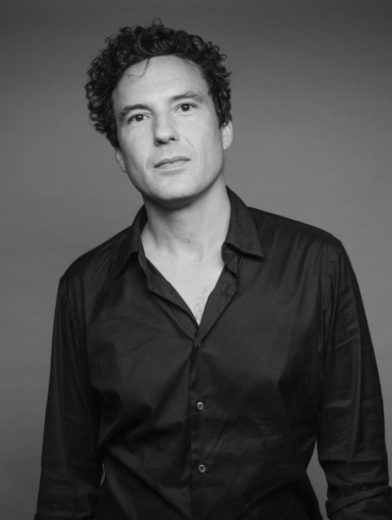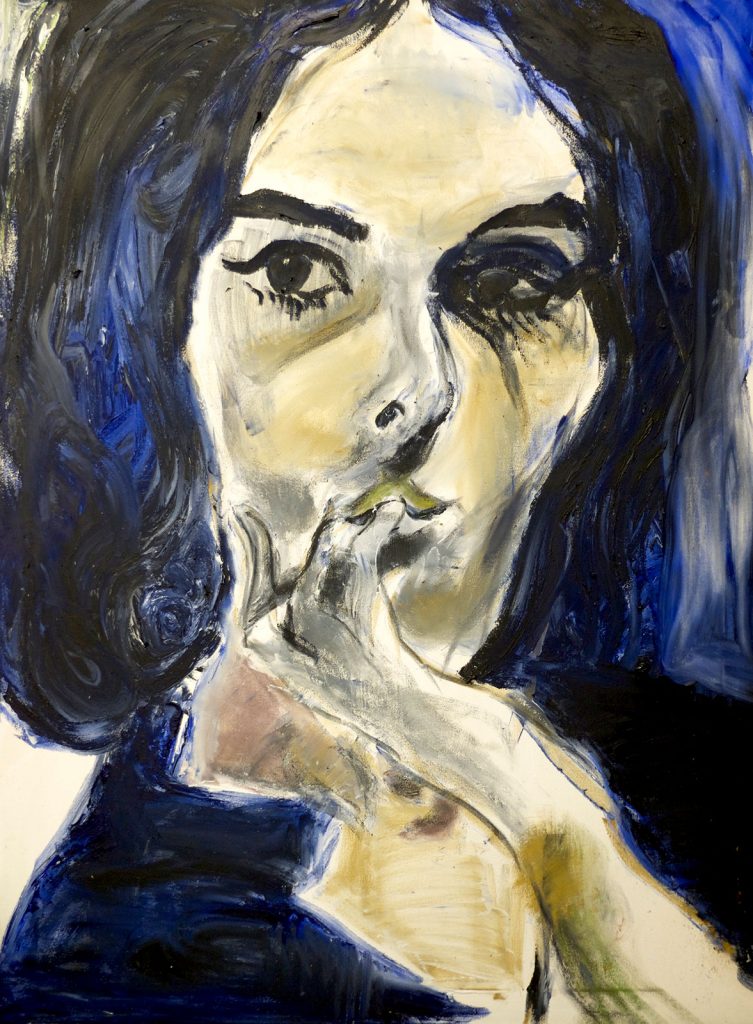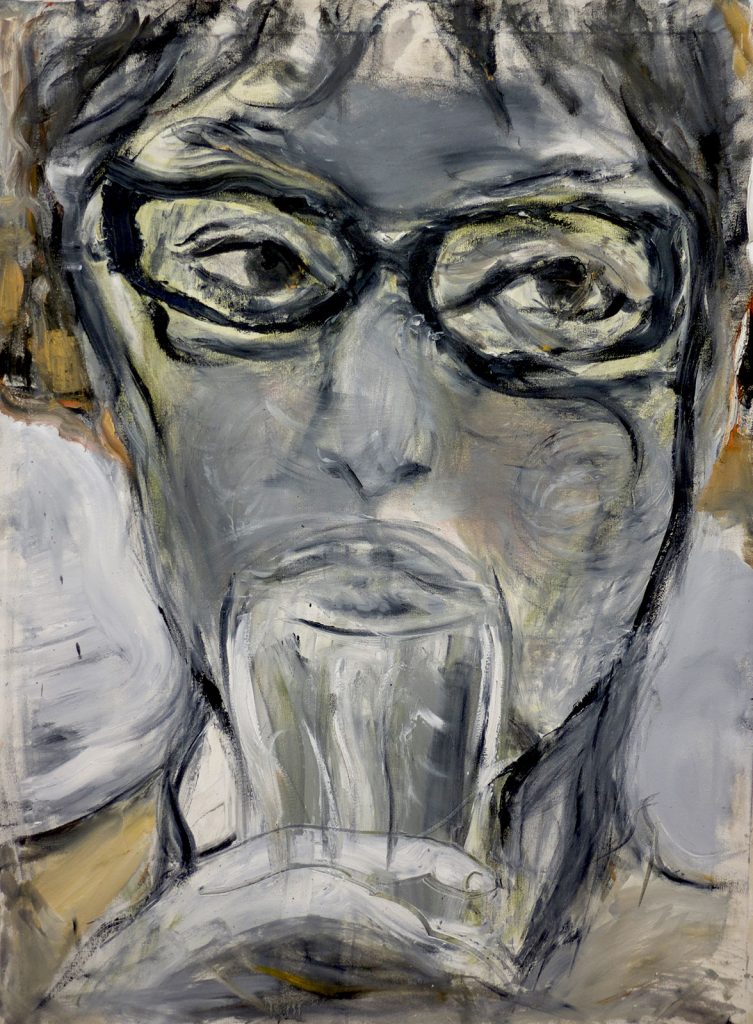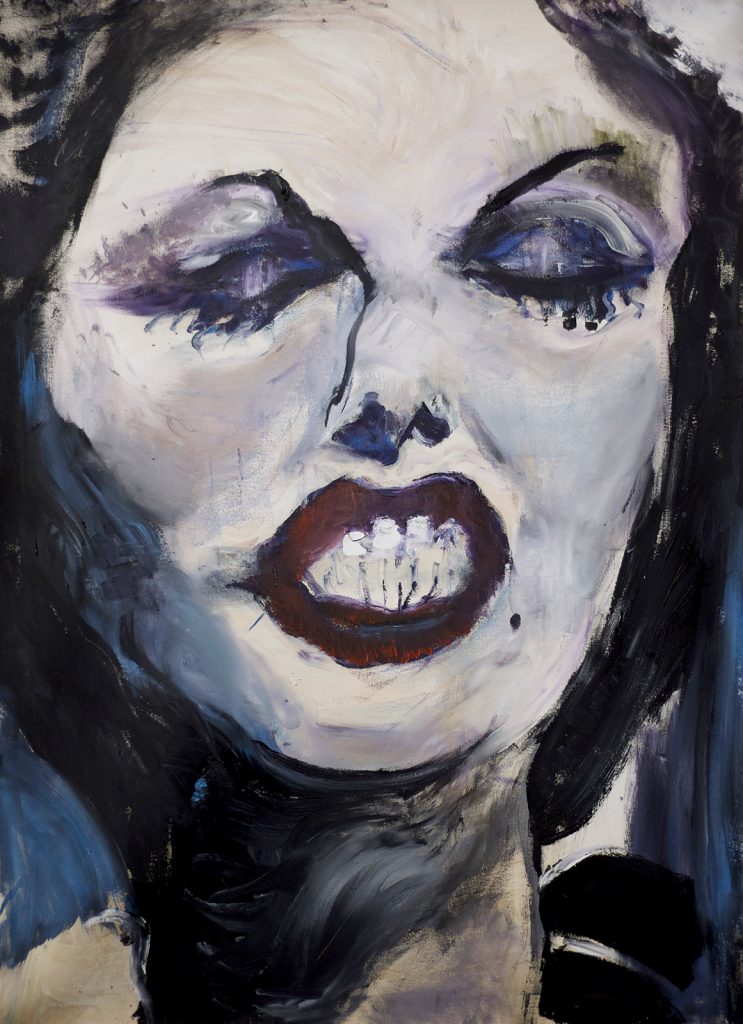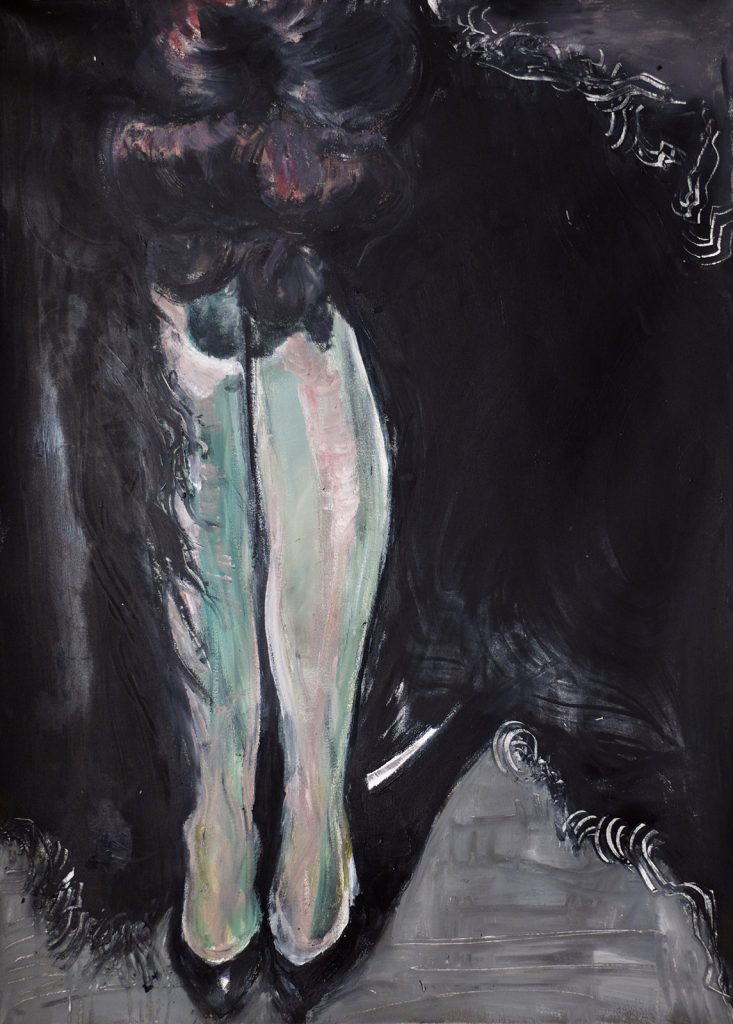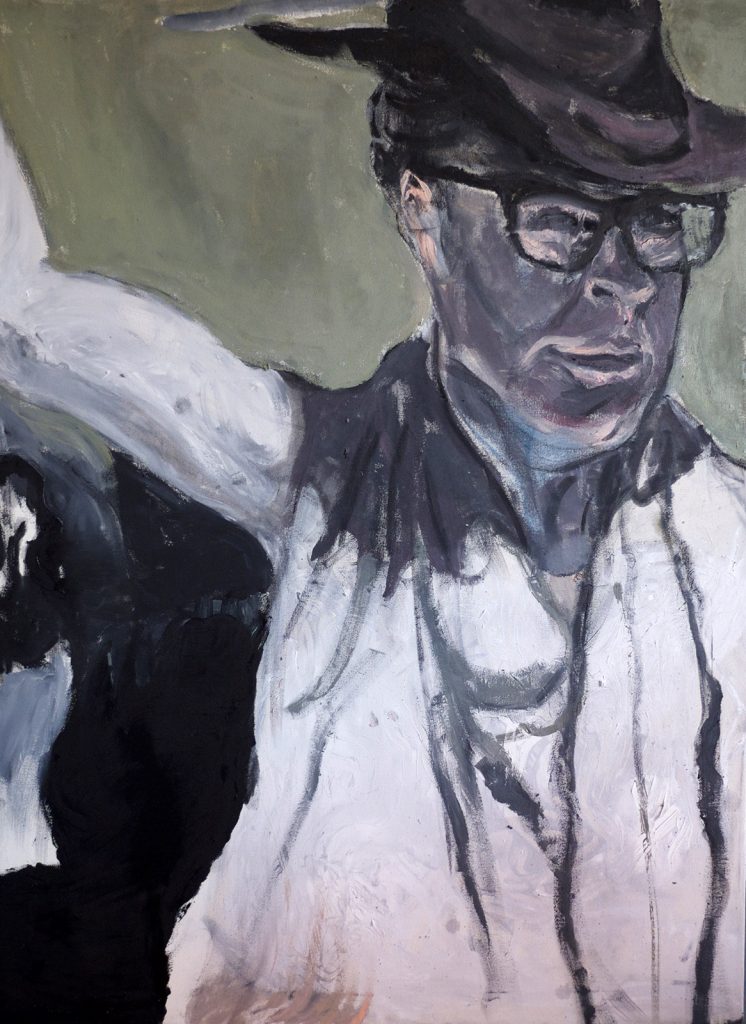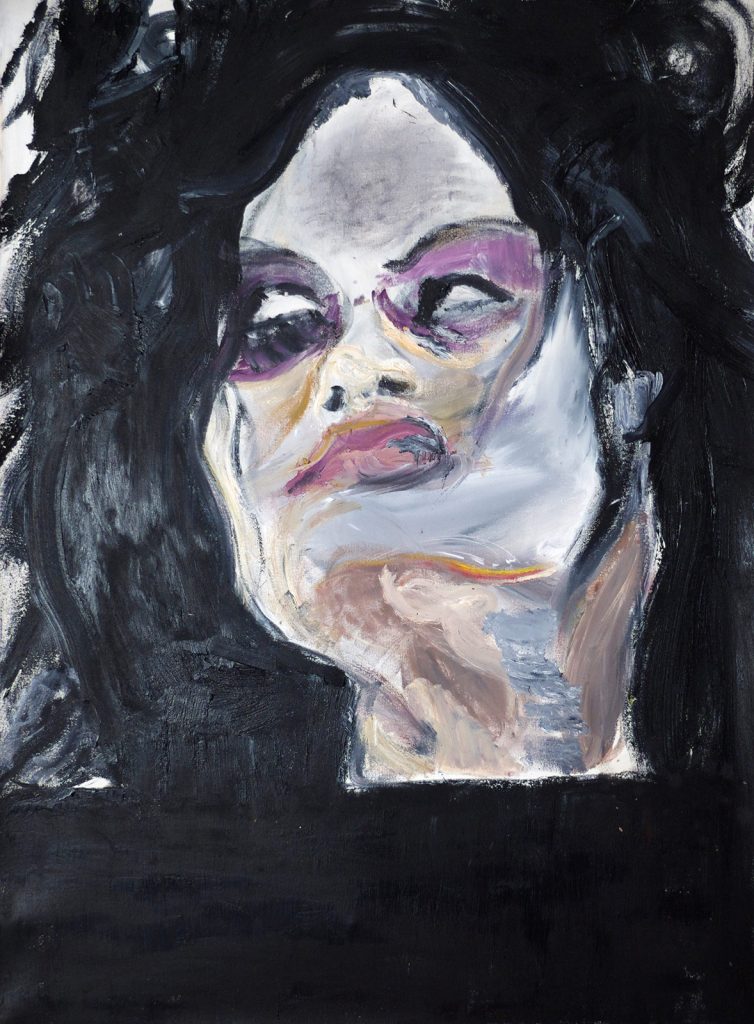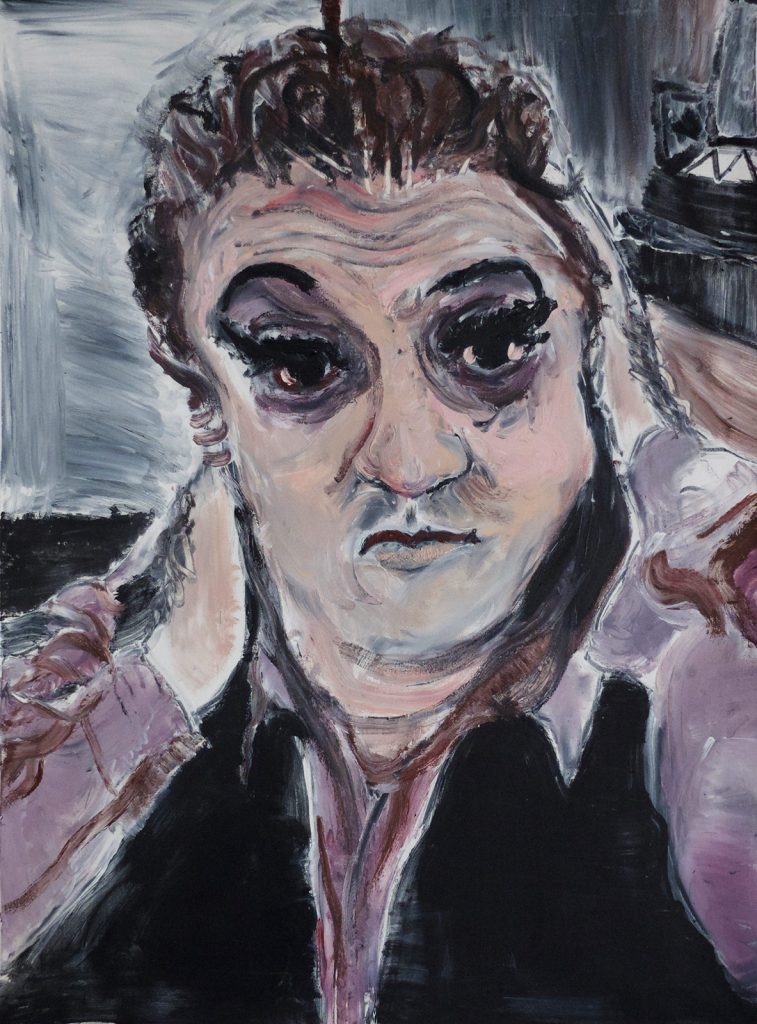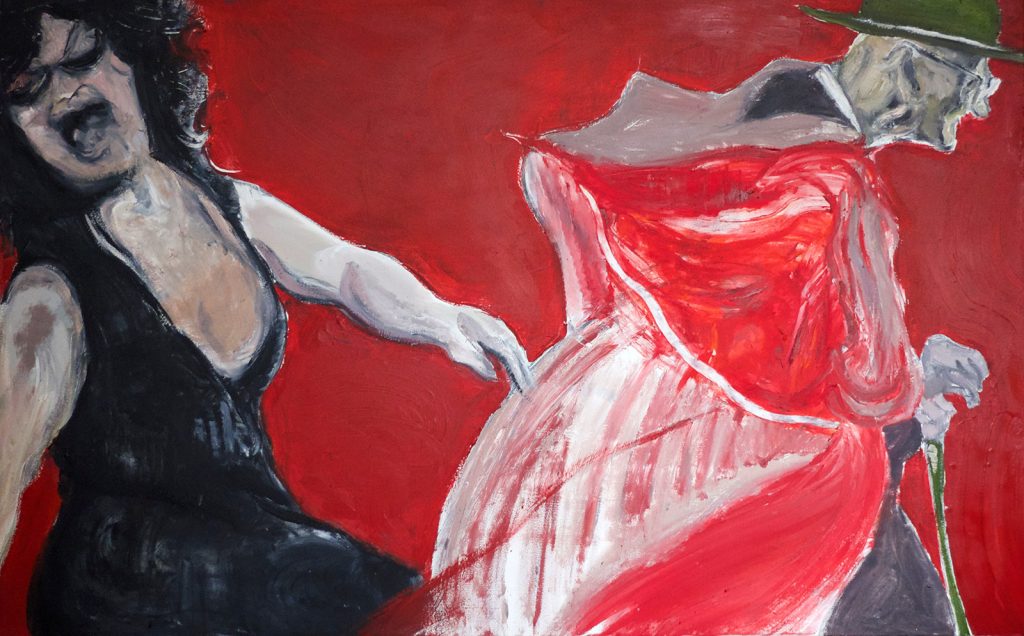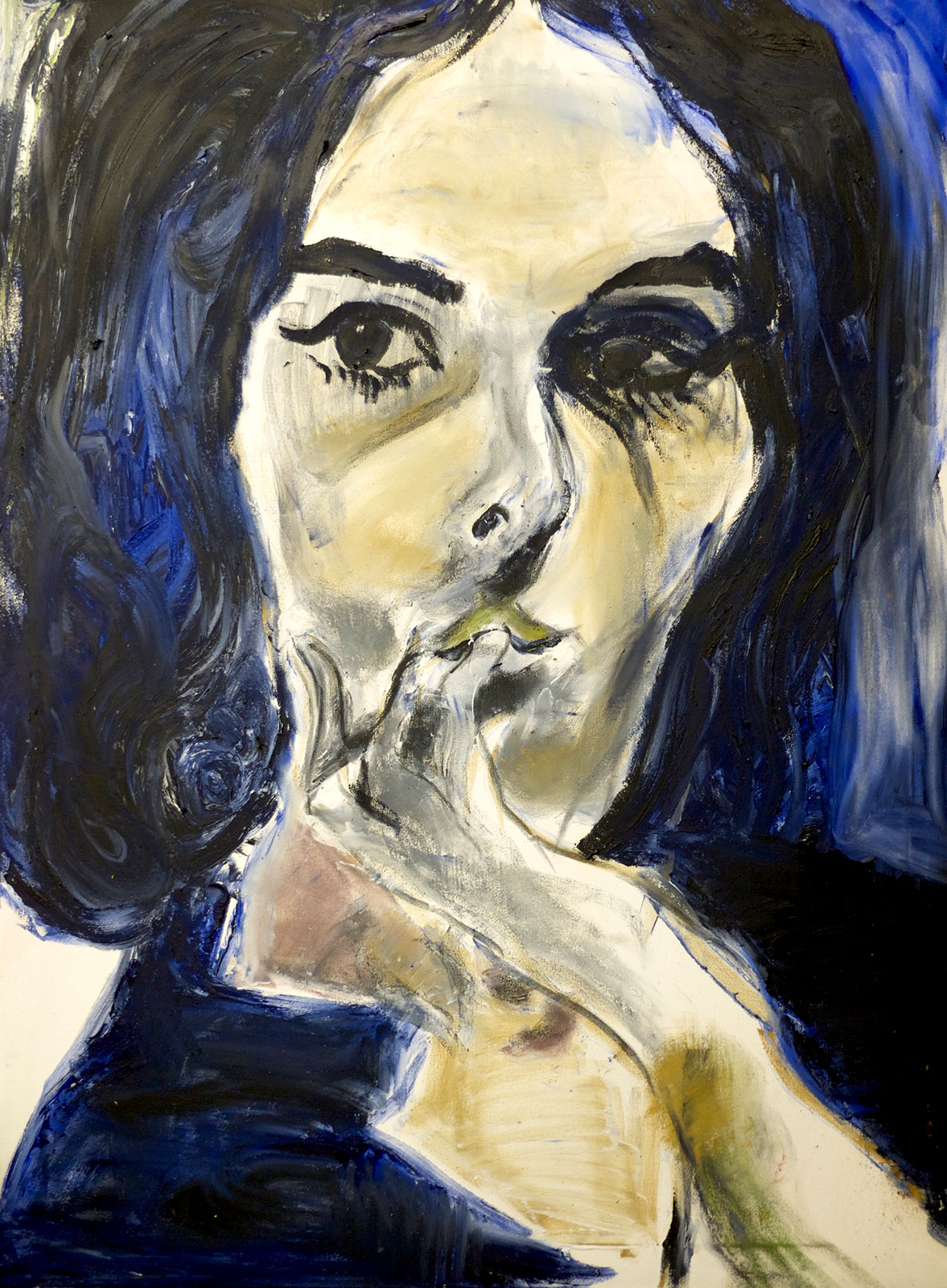
Rodolfo Villaplana’s second solo exhibit at Maja Arte Contemporanea is a tribute to 8 ½, Fellini’s eponymous film.
The eight paintings on display, all composed in 2016, are inspired by the female figures in the film.
Five of the paintings are portraits: Luisa, the middle class wife; Carla, the sensuous lover; Saraghina, the voluptuous prostitute, a “splendid though horrifying dragon” in Fellini’s own words; Claudia, the pure and ethereal beauty; and, Gloria, Mezzabotta’s young and bold lover.
“The female portraits are visual narratives exploring several feminine archetypes by pushing them to their extreme,” says Villaplana. Speaking of Fellini’s masterpiece, he adds, “The director lives through the world he has conceived, without separating reality from fiction. This leads to the film’s closing scene” – which is, in turn, the inspiration for one of the other paintings on display – “where reality merges with an imagined world to the frantic pulse set by the music. It is a visceral and aesthetic triumph, celebrating both life and creativity while subtly suggesting that art might be able to reduce the distance between reality and dreams.”
The remaining two paintings are portraits of Guido Anselmi (Marcello Mastroianni) and Federico Fellini (I am Carla) ironically posing as one of the movie’s protagonists. The latter seems to mock the patriarchy typical of Mediterranean countries in the sixties and is in stark contrast with the shift in the role of Italian women at that time and their new flaming and exuberant freedom.
Born in Valencia (Venezuela) in 1975, Rodolfo Villaplana has been living between London and Montepulciano since 2002. At the same time as this solo exhibit, a selection of other works of his can be found on display in a show curated by Thierry Morel in London (the show is set to open in early October 2016).
In presenting the show, Morel writes of Villaplana’s art: “He deploys with his brush a wide-ranging symphony of hues and colours with uncompromising courage verging on brutality in order to portray ‘the inner being’ that he perceives in his sitter’s body and gaze. The rough and earthy texture of his oil paint seeks to defy the limitations imposed by a two-dimensional image […] (it is) a mysterious artistic process of construction and de-construction, adjunction, falsification even, that challenges the viewers’ senses and leaves them with a mixture of awe and raw emotions.”
Selected works
Gallery
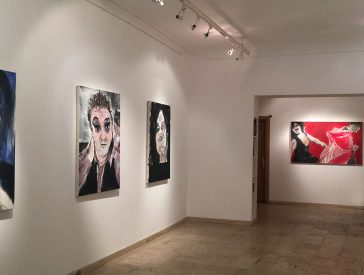
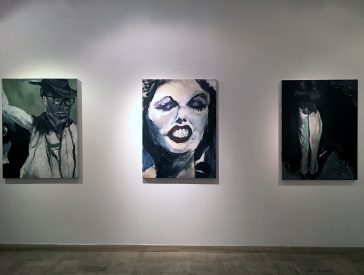
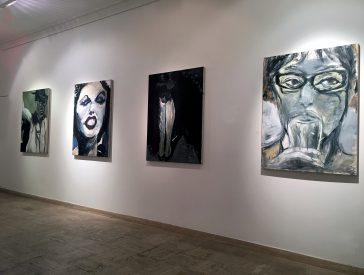
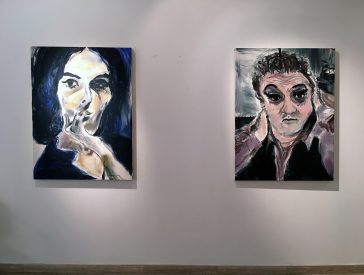
Exhibited Artists
